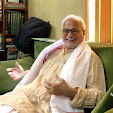Studies on Auroville
Yet, studies and research to date have rarely exceeded descriptive style and quality. Valuable exceptions are an excellent sociological study by Stuart Leard on aspects of Auroville’s administrative structures,2 an essay by Bindu Mohanty on Auroville’s spiritual ideals,3 and Anupama Kundoo’s fine book, in which Roger Anger’s architectural achievements – the architect who realised great buildings both in France and Auroville – have been splendidly presented.4
Interestingly, the economics of Auroville have attracted little attention to date, in spite of the prominence of articulated ideals such as ‘social ownership’ and ‘social commitment’, which are indications of a socially and economically coherent system. The absence of work contracts for members of the Auroville community signifies an emphasis on relations of trust between people, rather than the customary supply and demand in conventional market relationships. Also, the objective of creating a “no-money-circulation” system within the community shows the orientation Aurovilians are searching for in designing the socio-economic contours of their future city.
Auroville’s expansion, now stretching into its fifth decade, gives evidence of its institutional stamina also in the field of economics being sustained by a second and soon third generation of members. It is thus high time for a closer scrutiny and research.
Research on Auroville’s economy – to the extent that it has been undertaken – has mostly focused on two themes: the implications of a no-money-circulation economy and the key role of “contributions” from commercial units to the community.5 The first theme represents a strong preference to search for self-support, and the second tells how surpluses largely determine the community budget for sustaining its members and offering free or subsidised access to goods and services.
The aim of this study is to present an optimal mix of qualitative institutional characteristics with a quantitative analysis of Auroville’s economy. While applying a rigorous analysis, various methods have been used to optimally ensure a high degree of harmony with the fundamental objectives and practices in which this community would ‘recognise itself’. Author: Henk Thomas, Manuel Thomas
-
Economics for People and Earth: The Auroville Case 1968-2008 (ebook) -
This book provides fascinating insights into the challenges, creativity and commitment of the Aurovilians in building a collective economy based on the vis...
-
Conceptual Personae -
Every philosophy is populated by a conceptual persona that functions as its transcendental unity of apperception or the principle by which it is struck by ...
-
Concentration, Samadhi and the Integral Yoga -
As traditionally understood, Samadhi is a state of consciousness that is totally absorbed in the Absolute, devoid of content of “names and forms” and abstr...
-
What did the Mother say about making ends meet & education à la PJ Engineering College style? -
….and Mirambika parents pay well for the education of their children not only in monetary terms but also through voluntary teaching and assistance……………but ...
-
AVFF15, AV Archives -
[image: Thumbnail for 4122] Tomorrow 29th at 4:30 pm at SAIIER Conference Hall we can see a Presentation on Auroville Community Network . The Archives Tea...
-
The Veda and Sri Aurobindo's Savitri: 32: Manifestation of Savitri -
Savitri, again, manifests himself, especially in the formation of the Truth in man, through four great and active deities Mitra, Varuna, Bhaga and Aryaman, t...
-
Past & Future -
Bergson tells us, as Deleuze puts it in his Cinema books, that “the hidden ground of time” is “its differentiation into two flows, that of the presents whi...
-
The second Axial Age -
In his 1953 work The Origin and Goal of History, Karl Jaspers created one of the more enduring concepts in … Continue reading →
-
Van Vrekhem does not inquire into matters like avatarhood or divine force -
The Hindu : The Mother and the biographer's dilemma www.thehindu.com/2001/03/04/stories/1304017p.htm Mar 4, 2001 - The Mother and the biographer's dilemm...
-
Modernity has four pillars: English, Science, Democracy, and Market -
Savitri Era Party – @SavitriEraParty 216 FOLLOWING 526 FOLLOWERS Tusar Nath Mohapatra, Director, Savitri Era Learning Forum (SELF): Savitri Era of those who...
-
Savitri, Nirvana, and Evolution -
Savitri Era of those who adore, Om Sri Aurobindo & The Mother. - Auroville News - All in one place Savitri, book VII, Canto VI #3rd - [image: Thum...
-
Physical Education: 57: Pilates and Spine -
Among the many popular systems of exercises, Pilates stands out for concerning itself with the health of spine. All movements in Pilates are slow, deliberate...
-
Indians and Westerners in Sri Aurobindo Ashram – by Baikunth -
I see a silver lining in the clouds in those few Westerners who dared to stand by Sri Aurobindo at the expense of their national pride and ego. For the tru...
-
A reader’s query -
A reader of the blog, Satyanarayana, sent in the following question. Could any of our learned śāstrīs provide any insight? * * * The asatī : Strīsvabhāva, ...
-
"The Mystery of Death" by Manoj Das -
Courtesy : Imprint , January 1983 Courtesy : All India Magazine, May 1984
-
GRATITUDE -
*The whole being offers itself to the Lord in absolute trust* *– The Mother* *Botanical Name*: Operculina turpethum *Common Name: *Wood rose *Spiritual ...
-

No comments:
Post a Comment